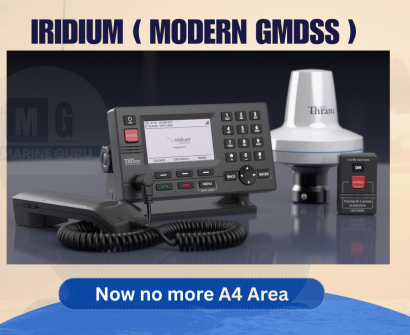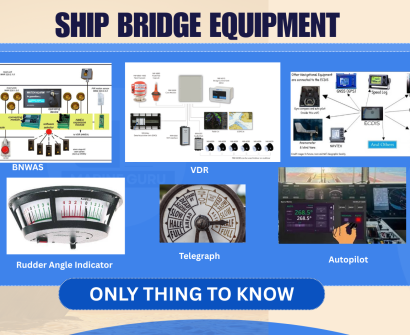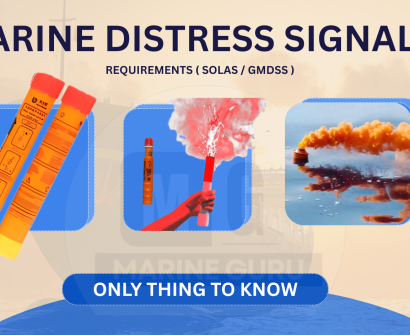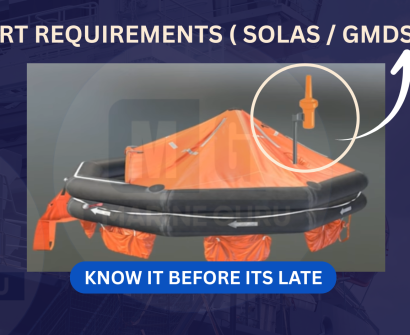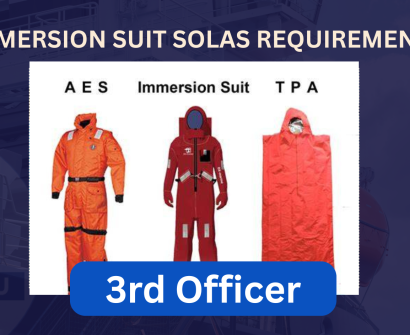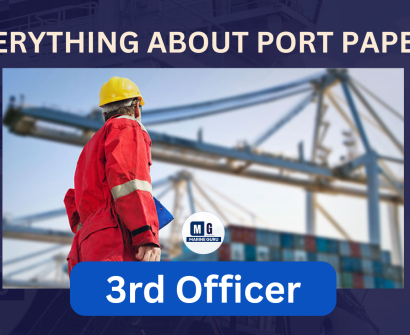
GMDSS Functional Requirements, Sea Areas (A1–A4) & Availability of Radio Equipment — Explained for New Seafarers
This guide explains the nine functional requirements of GMDSS, how SOLAS defines sea areas (A1–A4), carriage requirements per area, and the three availability/maintenance options. After the main explanation we add plain, practical examples and simple memory tricks so even a new seafarer can understand and remember key points.
9 functional requirement of GMDSS
(Below is the main information — presented clearly and faithfully to you to remember)
Functional requirements of GMDSS — 9 points
- Transmit ship-to-shore distress alerts by at least two separate and independent means, each using a different radio communication service.
- Examples: DSC on VHF/MF/HF, Inmarsat, EPIRB.
- Receive shore-to-ship distress alerts on board ships.
- Examples: Direct broadcasts from shore-based Rescue Coordination Centres (RCC) via DSC on VHF/MF/HF; Maritime Safety Information via NAVTEX or SafetyNET.
- Transmit and receive ship-to-ship distress alerts.
- Examples: VHF Channel 16 or Channel 13 via radiotelephony; DSC on VHF/MF/HF.
- Transmit and receive search-and-rescue coordinating communications.
- Examples: Voice radiotelephony on VHF/MF/HF; Inmarsat; text messages where used for SAR coordination.
- Transmit and receive on-scene communications.
- Meaning: Communications between search parties/vessels in the search area engaged in SAR operations.
- Examples: VHF, MF/HF radiotelephony used by units working the scene.
- Transmit and receive signals for locating (i.e., locating aids).
- Example: SART (Search and Rescue Transponder), radar transponders operating at ~9 GHz, EPIRB signals used with COSPAS-SARSAT.
- Transmit and receive Maritime Safety Information (MSI).
- Transmit: SafetyNET (via satellite) or other broadcast services.
- Receive: NAVTEX, EGC receivers, and onboard NAVTEX/receivers.
- Transmit and receive general radio communications to and from shore-based radio systems.
- Examples: Voice radiotelephony via VHF/MF/HF; telex/NBDP where available—used for routine comms, not distress.
- Transmit and receive bridge-to-bridge communications.
- Example: VHF radiotelephony (Channel 16 for calling and working channels for routine bridge-to-bridge comms).
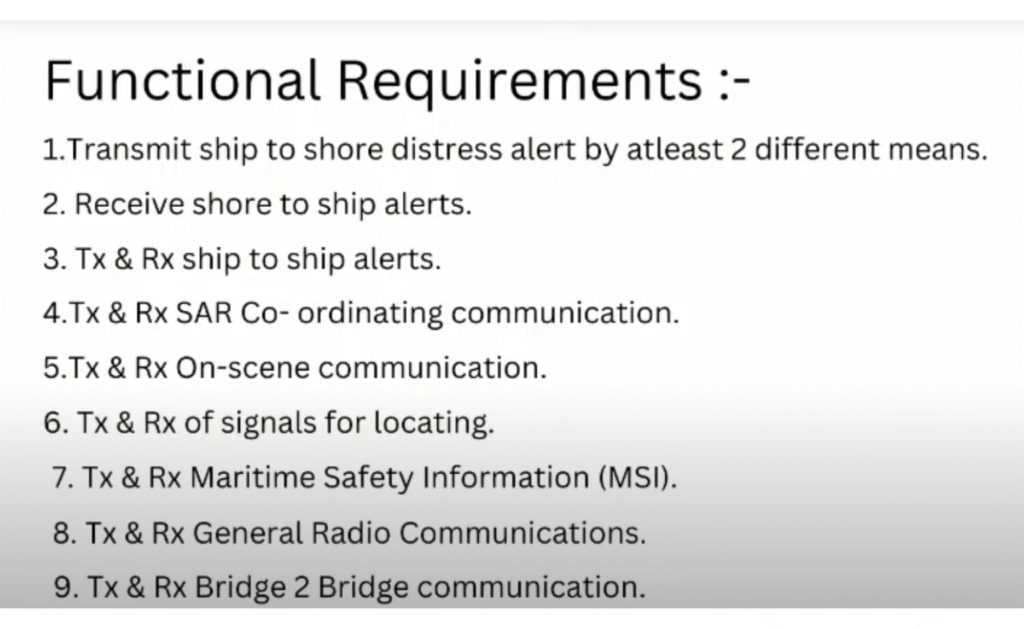
Sea areas (C-areas) & carriage requirements (SOLAS)
- Sea Area A1: Within VHF coast radio telephone coverage with continuous DSC alerting (approx. 20–50 NM, depends on antenna height).
- Carriage (A1): VHF with DSC (Ch 70), radiotelephony, NAVTEX, EPIRB, SART, portable VHF.
- Sea Area A2: Outside A1 but within MF coast radio telephone coverage with continuous DSC alerting (approx. 50–250 NM).
- Carriage (A2): VHF with DSC & radiotelephony, MF with DSC & radiotelephony, NAVTEX/EGC receiver, EPIRB, SART, portable VHF.
- Sea Area A3: Outside A1/A2 but within Inmarsat geostationary satellite coverage (between ~76°N and 76°S).
- Carriage (A3): VHF with DSC & radiotelephony, MF with DSC & radiotelephony, Inmarsat (satcom), HF with DSC & radiotelephony & NBDP, NAVTEX/EGC receiver, EPIRB, SART, portable VHF.
- Sea Area A4: Areas outside A1–A3 (polar regions beyond ~76°N or S). Inmarsat coverage is not available.
- Carriage (A4): VHF with DSC & radiotelephony & NBDP, MF/HF with DSC/radiotelephony/NBDP, EPIRB, SART, NAVTEX/EGC where applicable, and satellite systems suitable for polar regions (e.g., COSPAS-SARSAT + polar systems).
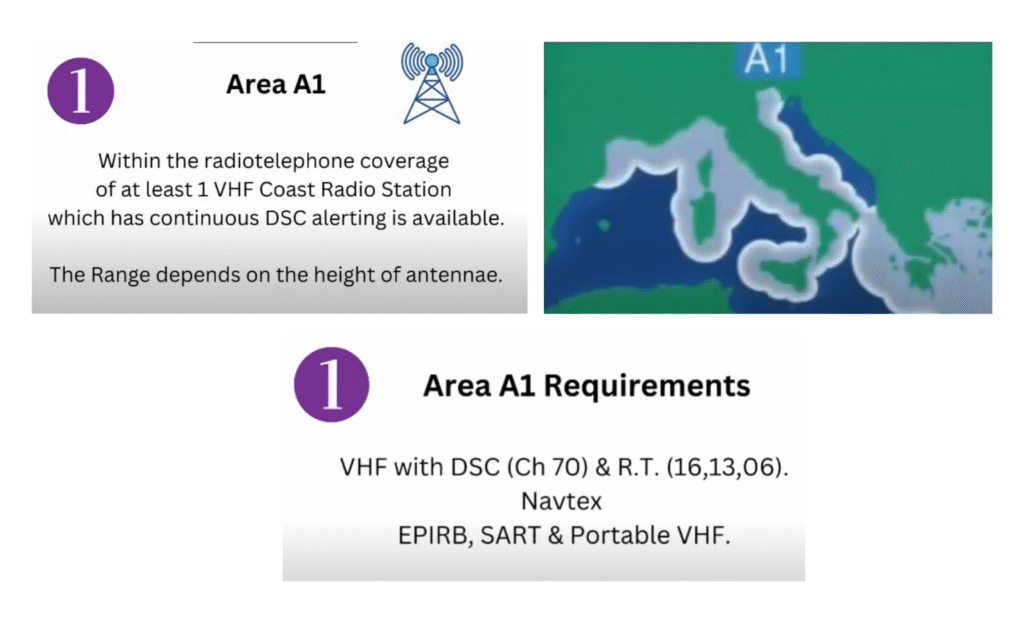
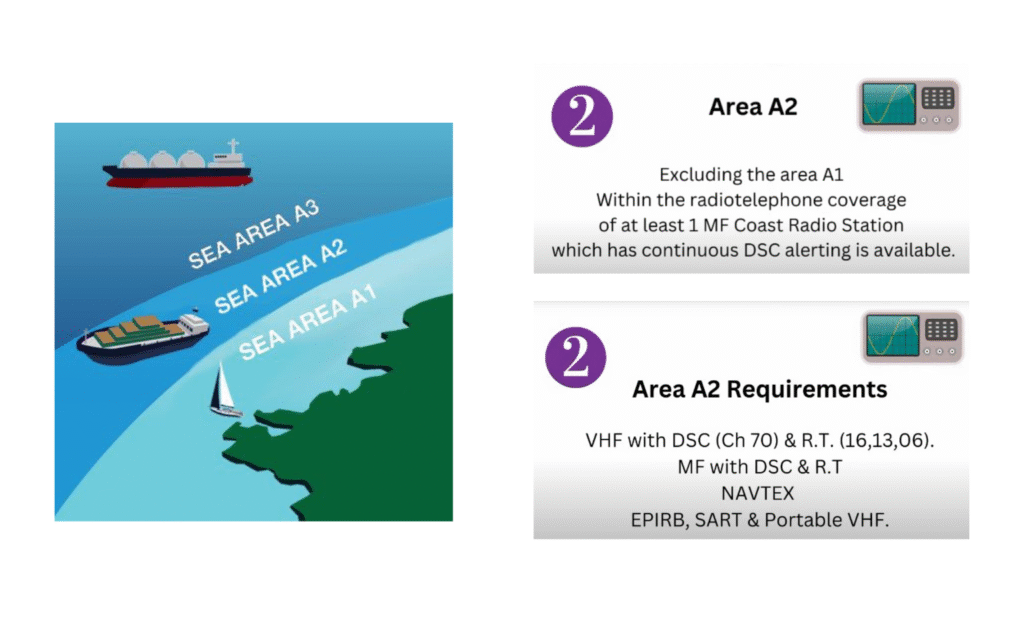
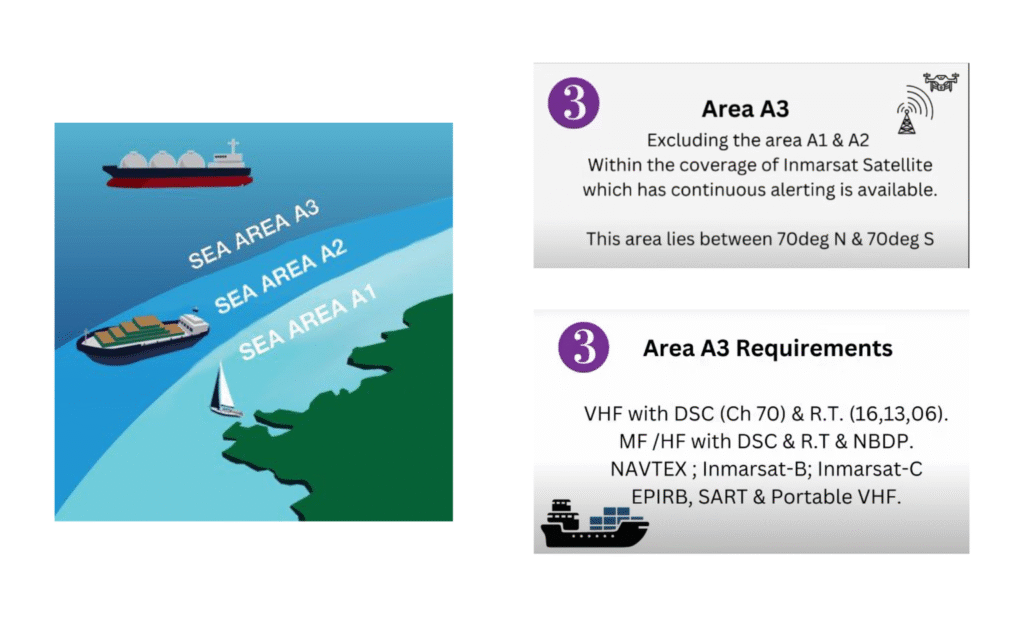
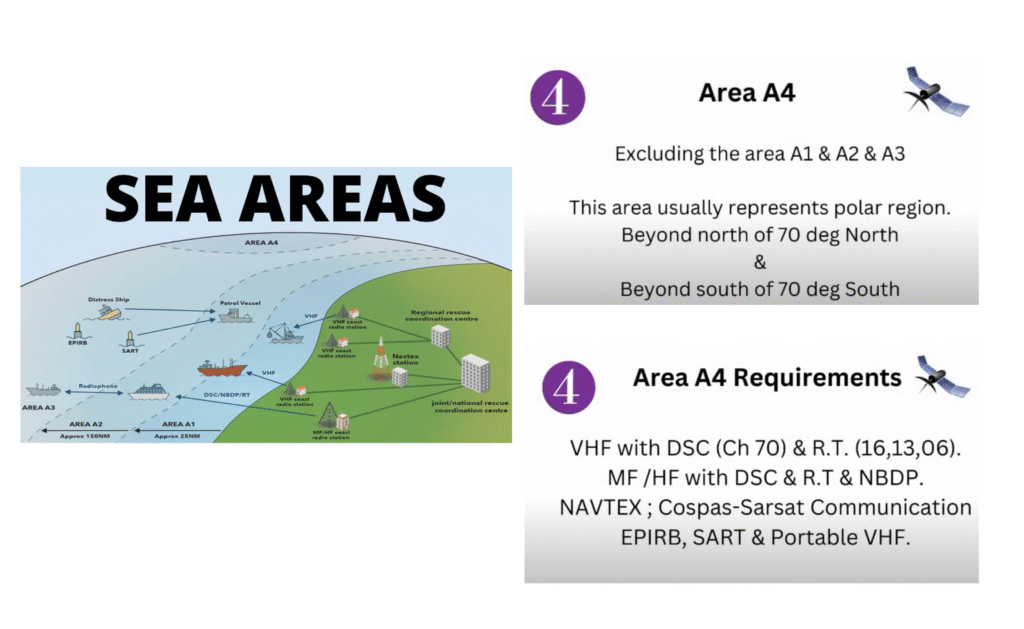
Note on Inmarsat vs. polar satellites: Inmarsat geostationary satellites cover roughly 76°N to 76°S (equatorial-to-mid latitudes). Polar regions require other satellite systems (e.g., polar-orbiting satellites or specialised polar comms).
Availability of radio equipment — three options
Vessels must satisfy carriage requirements and choose availability options that apply to their trading area:
- On-board maintenance (RC) / having a qualified radio officer & spares on board
- Ship has personnel and spares for in-house maintenance.
- Shore-based maintenance agreement
- Contract with shore parties to provide maintenance/repairs within required response times (approved by flag state).
- Duplication of equipment (redundancy)
- Carry duplicate sets (e.g., two Set Cs, additional transceivers) to meet availability.
- How to know which option applies to your ship: Check the ship’s Safety Radio Certificate (SRC) / radio-safety documentation — it will state which availability methods are in place.
- Rule of thumb for combinations:
- Ships trading in A1 & A2 must adopt any two methods of availability.
- Ships trading in A3 & A4 must choose any two of the availability options as well.
PRACTICAL EXPLANATIONS, SIMPLE EXAMPLES & MEMORY TRICKS (for new seafarers)
Below we keep the main facts intact (no changes) and now add plain-language examples, quick checks you can do on the ship, and memory tricks to help you remember.
1 → 9 functional requirements — simple one-line meaning + a concrete shipboard example + a memory trick
- Two independent ways to alert shore
- Plain meaning: If one method fails, another must reach shore.
- Example: If your EPIRB triggers and the satellite picks it up, you still must be able to send a DSC distress on VHF/MF or use Inmarsat.
- Trick: “Two to the shore” — imagine two lifebuoys thrown to shore. Mnemonic: TWO-SHORE.
- Receive shore alerts
- Plain: You must hear RCC broadcasts and NAVTEX warnings on board.
- Example: NAVTEX tells you of local navigation warnings; DSC broadcast from RCC tells all ships in area about a rescue.
- Trick: Think “Shore → Ship = News” (shore sends NEWS via NAVTEX/DSC).
- Ship-to-ship distress
- Plain: Talk or send alerts directly to other ships.
- Example: A nearby fishing boat replies on VHF 16 when you call “MAYDAY” and takes part in rescue.
- Trick: “Ship ↔ Ship” — two ships talking across the deck. Remember VHF 16 (calling).
- Search & Rescue coordination
- Plain: Comms used to coordinate rescue teams (ships/planes).
- Example: RCC asks your ship to act as on-scene coordinator and you relay positions via Inmarsat and VHF.
- Trick: “SAR = Share And Relay” — coordination needs sharing info.
- On-scene communications
- Plain: Talk between ships/boats actually searching around the life raft.
- Example: Cutter A instructs Cutter B: “Hold position 0.5 nm north of debris.” Use VHF working channel.
- Trick: “On-Scene = On-Site Chat” — think local VHF chatter.
- Signals for locating
- Plain: Devices that help rescuers home in on survivors.
- Example: SART blips on rescuers’ radar; EPIRB transmits GPS coordinates to satellites.
- Trick: “SART = Spot And Radar Tells” — SART shows up on radar.
- Maritime Safety Information (MSI)
- Plain: Weather, navigational warnings and safety broadcasts.
- Example: NAVTEX prints a local weather warning; SafetyNET sends global warnings.
- Trick: “MSI = Map & Safety Info” — think daily message board.
- General radio comms
- Plain: Routine calls and admin comms (not distress).
- Example: Calling port station for berth instructions via MF radiotelephony.
- Trick: “General = Normal Chat” — default radio use.
- Bridge-to-bridge comms
- Plain: Captains and watch officers coordinating passage in close waters.
- Example: “This is MV Oceanic, altering course to starboard to pass you port-to-port.” Use VHF.
- Trick: “Bridge to Bridge = Boss-to-Boss talk”.
Quick practice on board: Walk to the comms cabinet and locate: VHF control, DSC indicator (Ch 70), NAVTEX, EPIRB, SART. Point at each device and say the one-line meaning aloud — this anchors memory with the physical item.
Sea Areas A1–A4 — plain language + simple scenarios + memory aids
- A1 (VHF coastal coverage ≈ 20–50 NM)
- Scenario: Short coastal ferry runs, frequent VHF coverage from shore stations.
- Remember: “A1 = A single coastal VHF” — think 1 → VHF.
- A2 (MF zone beyond VHF but within MF coverage ≈ 50–250 NM)
- Scenario: Offshore voyages where VHF fades but MF shore stations still reach.
- Remember: “A2 = A two-step out: VHF gone, MF on” — 2 → MF.
- A3 (Inmarsat satellite coverage, most of world between ~76°N–76°S)
- Scenario: Deep sea ocean voyages covered by geostationary satcom (Inmarsat).
- Remember: “A3 = A (area) + 3 = three (satellites cover ‘most’)” — tie 3→Inmarsat.
- A4 (Polar areas outside Inmarsat coverage)
- Scenario: Arctic/Antarctic waters; geostationary sats don’t see the poles.
- Remember: “A4 = Away to the poles” — 4 → far/polar.
Simple mnemonic for A1→A4:
“V-M-S-P” → VHF (A1), MF (A2), Satellite/Inmarsat (A3), Poles (A4).
Say: V M S P → “Very Many Ships Protected” (or pick your own phrase).
Availability options — quick examples & how to check on your ship
- On-board maintenance
- Example: Ship has a trained radio officer and a spare DSC board and basic electronic spares. Repairs done on board.
- How to check: Look in the radio locker for spares and the crew list for a designated radio officer.
- Shore-based maintenance
- Example: Company has a contract with local shore radio technicians who can respond within 24 hours.
- How to check: Look at the ship’s maintenance contract pages in the SMS or the Safety Radio Certificate annex.
- Duplication
- Example: Two VHF set-Cs or two HF sets on board — if one fails, the other is ready.
- How to check: Inspect the radio room — do you have duplicates labeled as second set?
Memory trick: Think “M-S-D” (Maintenance on-board, Shore-contract, Double equipment). Say “My Ship’s Duplicate” to recall options.
Quick revision routine (10 minutes/day) for a week before exam
- Day 1: Walk the radio room — name each item aloud (VHF, MF/HF, DSC, NAVTEX, EPIRB, SART).
- Day 2: Practice DSC distress sequence on simulator or paper — one method → shore & ship.
- Day 3: NAVTEX printout reading practice; identify MSI types.
- Day 4: Commercial log listening practice (30 min with noisy audio).
- Day 5: Run a simulated on-scene VHF exchange with a colleague.
- Day 6: Check SRC and ship paperwork; locate availability options.
- Day 7: Rapid-fire memory recall: 9 functional requirements + A1–A4 + M-S-D options.
Final practical tip from MarineGuru
- Touch + speak + test: The fastest memory anchor is doing. Touch the equipment, say what it does, and run quick tests/simulations. Physical interaction with each device cements the theory in your hands — and that’s what saves lives.
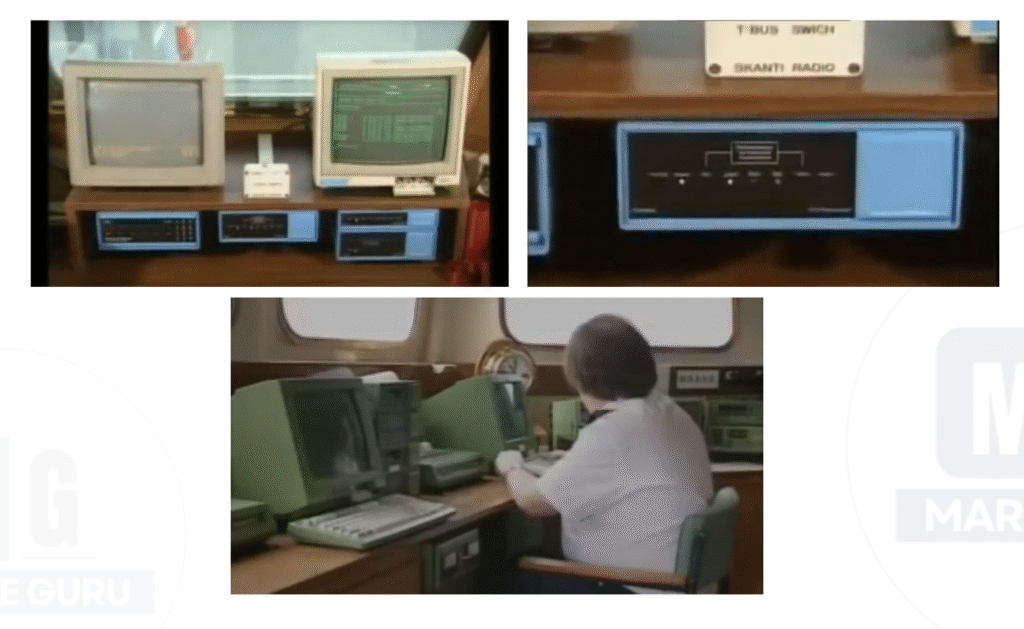
FAQ (short)
Q: How do I know my ship’s C-area?
A: Check the Safety Radio Certificate (SRC) and the trading limits of the vessel. SRC and ship SMS will specify sea area and required carriage.
Q: Can one ship use duplication instead of shore maintenance?
A: Yes — duplication (extra equipment onboard) is one of three accepted availability options. Usually, the vessel selects two methods that suit operations.
Q: Which frequency for bridge-to-bridge?
A: VHF radiotelephony (use Channel 16 for calling and then switch to working channel).


